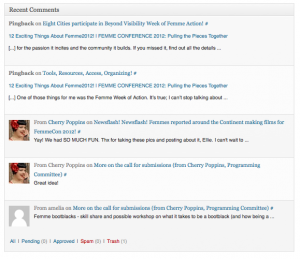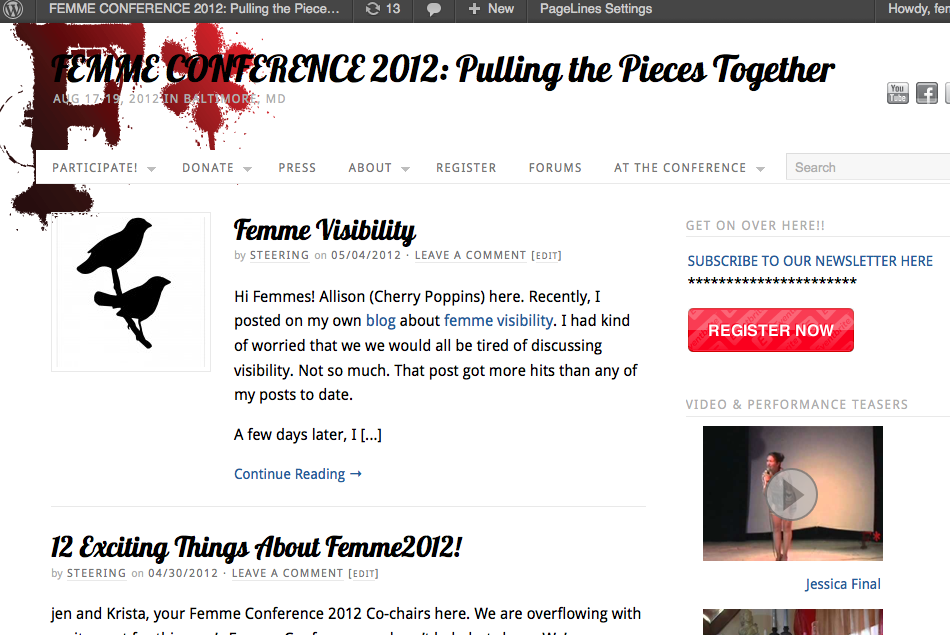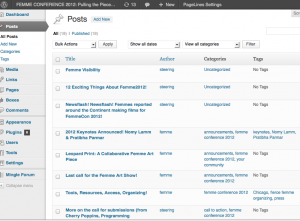
Recent Comments
Why are people participating?
- This is a “community of interest” — like a class, a set of organizers has pre-existing buy-in to the project.
Barriers to entry: know-how [can be solved pedagogically] and willingness to participate [community status can be leveraged]
- How-to and friendly reminders shared with team regularly
- Participation of others increases willingness for participation of the reluctant
Interactivity as part of the process
- Making many people participate in blogging by asking each committee to blog once a month
- Some people love it, and were in there commenting imediately, other people had to be put on a schedule to post on the blog


 The Femme Conference project has a built-in, existing community of 14 core organizers and about 35 total organizers who would be interacting with this media, either by creating blog posts, content for the web pages, or using the social media to let people know about the conference.
The Femme Conference project has a built-in, existing community of 14 core organizers and about 35 total organizers who would be interacting with this media, either by creating blog posts, content for the web pages, or using the social media to let people know about the conference.